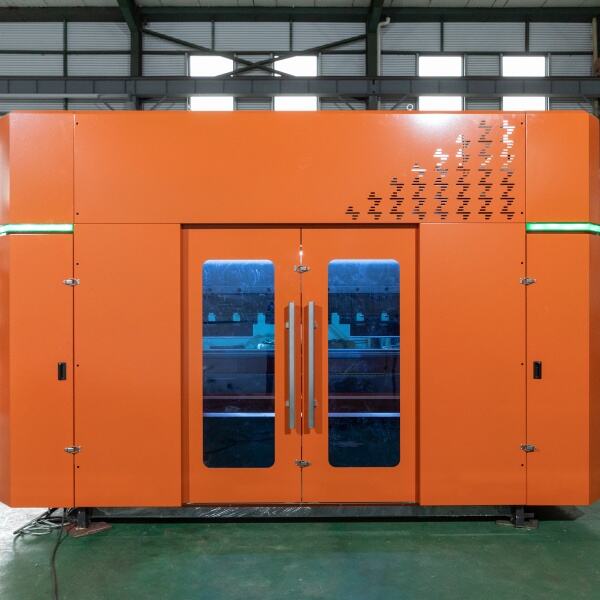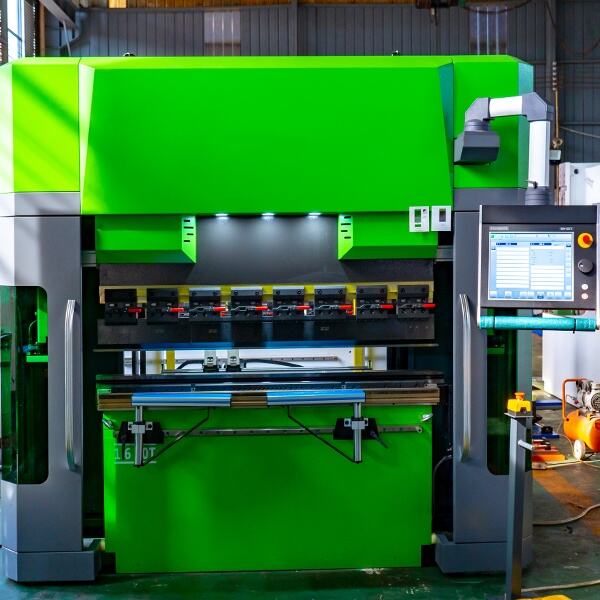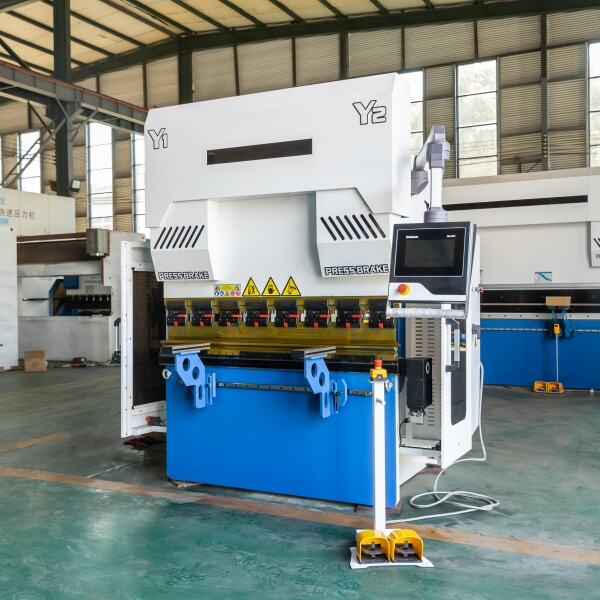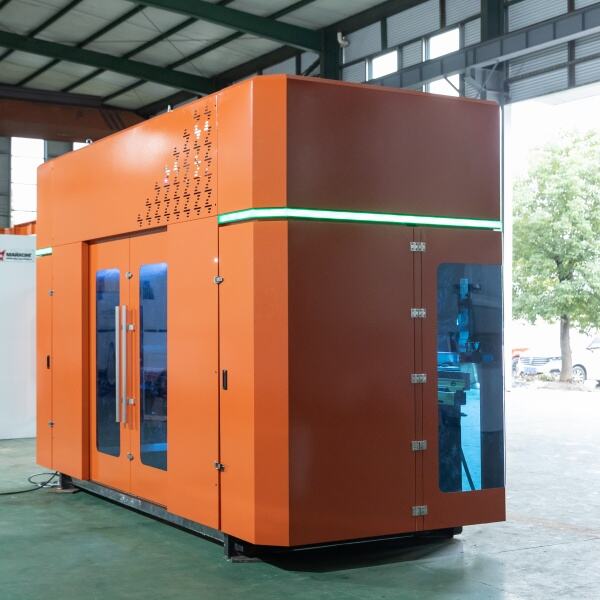
CNC press brake specifications are the detailed technical parameters that define a machine’s capabilities, performance, and compatibility with specific metal processing applications— critical information for clients to select the right machine for their industry needs. At RAYMAX, our CNC press brakes are available in a range of specifications, tailored to serve automotive, ship, railway, aviation, power, petrochemical, and light industries, with each model engineered to meet strict quality standards and deliver reliable performance. Below is a comprehensive overview of key specifications for our CNC press brakes, along with how they align with industry requirements. 1. Bending Capacity (Force) Bending capacity— measured in kilonewtons (kN)— is the maximum force the machine can apply to bend metal sheets, determining the thickness and strength of material it can handle. Our CNC press brakes offer bending capacities from 500kN to 3000kN: - 500kN to 1000kN: Suitable for light industry (e.g., bending 0.5-6mm thick aluminum or steel sheets for electrical enclosures, furniture components). A light industry client in Southeast Asia uses our 800kN model to produce stainless steel kitchen appliances, handling 3mm thick sheets with ease. - 1200kN to 2000kN: Ideal for automotive and railway industries (e.g., bending 6-15mm thick carbon steel sheets for car chassis or train bogie components). An automotive manufacturer in Western Europe relies on our 1600kN model to bend 10mm thick high-strength steel sheets for chassis frames. - 2200kN to 3000kN: Designed for heavy-duty applications like shipbuilding and power plants (e.g., bending 15-30mm thick steel plates for hulls or pressure vessel supports). A shipyard in the Middle East uses our 2500kN model to bend 20mm thick steel plates for ship hull components. 2. Bending Length Bending length— the maximum length of metal sheet the machine can bend— ranges from 1250mm to 6000mm in our models: - 1250mm to 2500mm: Compact models for small-batch production or limited workshop space, suitable for light industry (e.g., bending small electrical enclosure panels). - 3000mm to 4000mm: Mid-size models for automotive and aviation industries (e.g., bending 3m long aluminum sheets for aircraft fuselage parts). - 5000mm to 6000mm: Large models for railway and shipbuilding (e.g., bending 6m long steel sheets for train tracks or ship decks). A railway client in Western Europe uses our 6000mm model to bend long steel profiles for train rails. 3. CNC Control System The CNC control system is a core specification, dictating the machine’s automation level and programming capabilities. Our models offer two main options: - Standard CNC System (e.g., Siemens Sinumerik): Supports basic functions like program storage (up to 100 programs), manual parameter input, and simple 2D simulation. Suitable for clients with straightforward bending needs (e.g., light industry). - Advanced CNC System (e.g., Fanuc 31i-B): Includes advanced features like 3D simulation, automatic tool compensation, error detection, and remote monitoring. Compatible with industry 4.0 integration, allowing data sharing with factory MES systems. Ideal for aviation and automotive industries requiring high precision and complex bending sequences. An aviation parts manufacturer uses the advanced system to simulate and execute 5-step bending sequences for aluminum alloy components. 4. Tooling Compatibility Tooling specifications determine the machine’s ability to handle different bending shapes: - Punch and Die Types: Our CNC press brakes are compatible with standard V-dies (for angle bends), radius dies (for curved profiles), and custom dies (for non-standard shapes, e.g., U-channels for petrochemical pipelines). - Tooling Size: Punch diameters range from 3mm to 50mm, die widths from 6mm to 100mm, accommodating material thicknesses from 0.5mm to 30mm. - Quick-Change Tooling: Optional quick-change systems (e.g., European standard WILA) allow tool changes in <10 minutes, suitable for high-volume, multi-part production. 5. Hydraulic System Specifications The hydraulic system powers the machine’s ram, with key parameters including: - Maximum Pressure: 25MPa to 31.5MPa, ensuring sufficient force for thick materials. - Ram Speed: Rapid approach speed up to 150mm/s, working speed up to 30mm/s, and return speed up to 120mm/s— balancing speed and precision. - Oil Tank Capacity: 50L to 200L, with integrated cooling systems to maintain optimal oil temperature (preventing overheating during long production runs). 6. Accuracy and Repeatability These specifications are critical for precision industries like aviation: - Bending Accuracy: ±0.1mm (angle) and ±0.05mm (length), verified via 3D coordinate measuring machines during production. - Repeatability: ±0.03mm, ensuring consistent results across high-volume production batches. An automotive client reported that our CNC press brake maintained ±0.05mm repeatability over 10,000 bends of aluminum door panels. 7. Machine Dimensions and Weight These specifications impact workshop layout and installation: - Dimensions (L×W×H): Ranging from 2500×1500×2000mm (500kN/1250mm model) to 7500×2200×2500mm (3000kN/6000mm model). - Weight: 2000kg to 15,000kg, requiring proper foundation support (we provide foundation design guidelines for each model). 8. Safety Specifications All our CNC press brakes meet international safety standards: - CE Certification: Compliance with EU safety directives (e.g., EN 12622 for press brakes). - Safety Features: Emergency stop buttons, light curtains (to prevent operator access during operation), and overload protection (to prevent machine damage). At RAYMAX, we understand that clients may have unique specifications needs. Our technical team works closely with each client to modify standard models— for example, increasing bending length for a railway client or adding corrosion-resistant coatings for a coastal petrochemical client. We also provide detailed specification sheets for each model, along with test reports verifying performance, to help clients make informed decisions. Whether for a small light industry workshop or a large aviation manufacturing facility, our CNC press brake specifications are designed to meet diverse industry requirements, backed by our 22-year reputation for quality and reliability.


